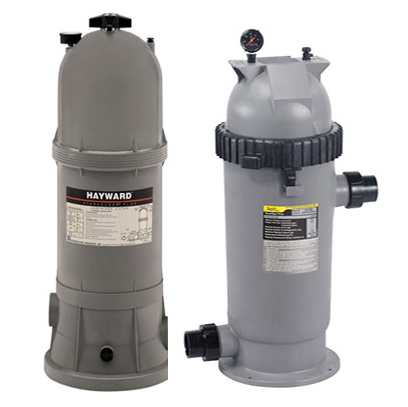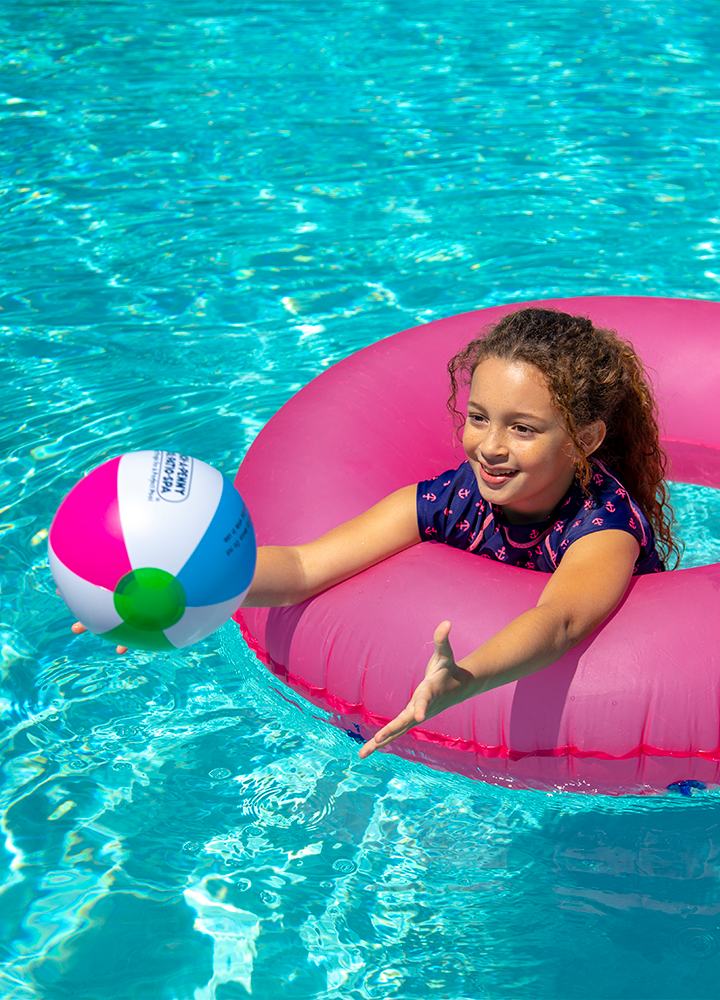Your pool filter is one of the most important pieces of equipment for your pool. With the help of the pool pump, water moves through the filter, and dirt and debris become trapped inside, keeping your pool water clean and clear. Filters come in different varieties that require different levels of maintenance and trap different sizes of particles measured in microns. You’ll need to ask yourself how much time you’re willing to dedicate to maintenance and how clean you want your water to be to determine what type of pool filter is right for you.
How effective is my pool filter?
Many factors determine how effectively each type of pool filter can do its job, including filter area, water pressure, and the size of the particles that it can trap. This ability is determined based on micron size. A micron is 1 millionth of a meter. For the sake of comparison, a strand of human hair is about 70 microns across. A filter that traps particles about 5 microns wide will collect more material than one that traps particles between 25-30 microns.
How does a sand filter work?
A sand filter is basically a large canister of sand that traps dirt and debris as water is forced through it. There are two types of sand filters used for swimming pools. The most common is the high-rate sand filter, which uses sand as the filter medium. The other is a rapid-rate sand filter that uses layers of rock and gravel for support on top of the layer of sand. As water passes through the sand bed, dirt and debris are trapped by the sand grains. Sand filters can also utilize Zeobrite to increase their cleaning power. Sand filters use 20-grade silica sand capable of trapping particles as small as 20-30 microns.
Sand filters are considered to be the easiest to maintain. Sand filters are backwashed when the pressure reads 10 psi over the normal operating level. With proper water chemistry, you can expect your filter media to last 5-10 years.


How clean does a cartridge filter make my pool water?
Cartridge filters use replaceable paper or fabric-like pleated cartridges as their filter medium. They are available in both banded and bandless cartridge filter varieties and both can trap particles as small as 10-20 microns. Cartridges have a large surface volume to catch whatever the water pushes through them. A cartridge filter generally has one cartridge inside. However, for a larger cleaning area, some models may have multiple cartridges inside the tank. These are sometimes called quad filters. In Texas, where large pools are common, these types of filters are used frequently.
How long a filter element lasts will depend on many variables, including how it is cared for and its environment. The more dirt, vegetation, hours of operation, body oils, scale, and dogs a pool is exposed to, the more wear is placed on the filter element.
Individual cartridges must be removed, sprayed, and soaked when the pressure gauge reads 10 psi over the normal level. Use a good cleaning agent such as Suncoast Spray & Rinse pool filter cleaner or Suncoast Cartridge Cleaner to remove the scale and oils that impede filtration.
What is a Diatomaceous Earth Filter?
Often called DE, diatomaceous earth is composed of the skeletons of microscopic sea creatures. This filter type is the most complex but also the most effective. Because they can remove such small particles, they say DE filters “polish” the water as it passes through the medium.
DE filters work by forcing water through the diatomaceous earth, which traps the debris and algae. These upright cylinder tanks have long, half-moon, rectangular-shaped grids or fingers. A spreader, which is connected to a collector or manifold, separates these grids and holds them in place. Water flows through the tank and then passes through the diatomaceous earth. It then passes through the filter grids to remove particles from 3-5 microns and finally into the manifold before returning to the swimming pool.
Much like a sand filter, DE Filters must be backwashed when the pressure is 10 psi over the normal level. New DE powder must be added to the filter as well. DE filter media may last 10 years or longer depending on water chemistry and maintenance.

Share This Post
Related Tags

